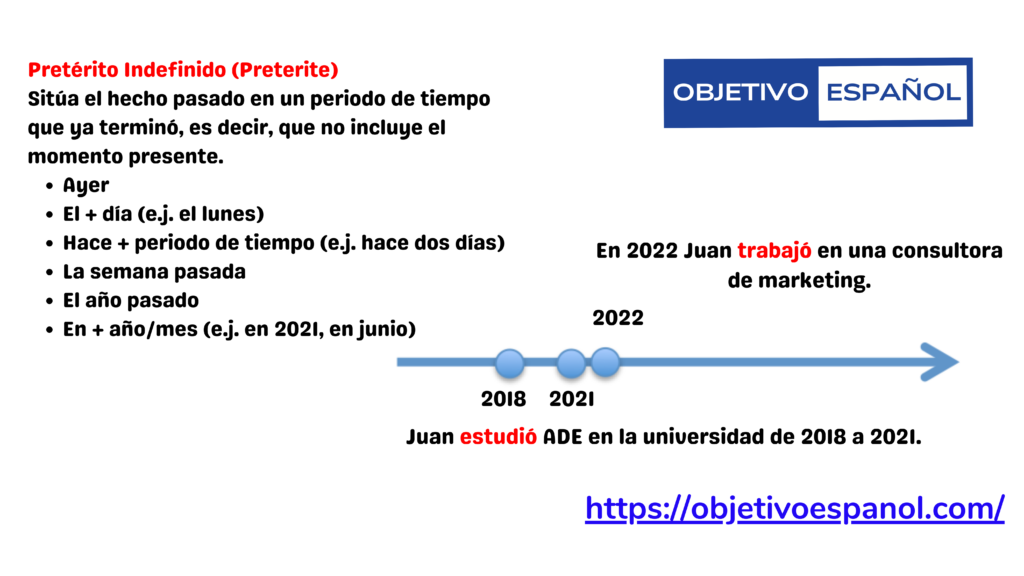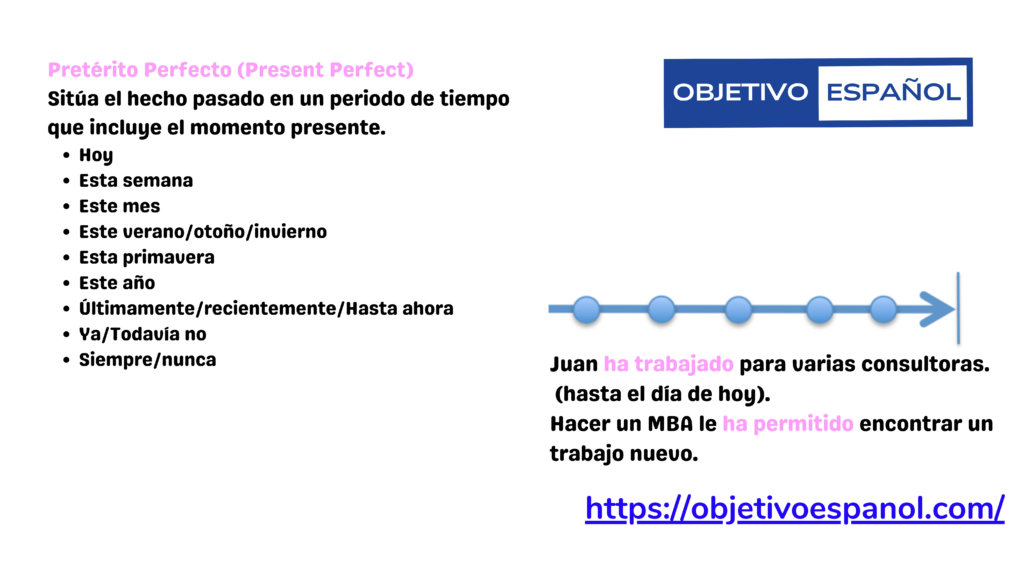Knowing when to use the Preterite (or Pretérite Indefinido) and the Present Perfect (or Pretérito Perfecto) in Spanish can be challenging. In this reading you will discover when and how to use these two tenses.
- Preterite or Pretérito Indefinido
We use the Preterite tense when we want to talk about finished events, that is to say, an event that occurred at a specified time in the past and therefore, we are able to locate it in a timeline. The typical time markers which accompanied this tense are

This is why the time markers associated to this tense are: ayer, el + día, for example, “el lunes” (i.e., last Monday), hace + period of time (e.g. “hace dos días”, “hace una semana, “hace un año”, etc.), “la semana pasada” (last week), “el año pasado” (last year) or we can specify the date, “en 2021”.
- Present Perfect or Pretérito Perfecto
Instead, if we want to state that the action is linked to the moment of utterance, that is, the action applies up to now, then in Spanish we used the Present Perfect (or Pretérito Perfecto). Notice that the exact time when the event occurred is not stated or relevant for the speaker. In our example, Juan is not interested in mentioning the specific time when he worked in each consulting company. He just wants to mention that in his lifetime he has worked for several. To illustrate the difference you can watch the following video: https://youtu.be/TzSB_6DnIXM
To illustrate the difference you can watch the following video: https://youtu.be/TzSB_6DnIXM
You can also read the role-play of the two school friends, Juan and Pedro, who have just met today after 10 years.





Learning when to use the Preterite and the Present Perfect takes time, but with consistent practice and the right approach, you will be surprised by how quickly you can improve. Remember that every word you learn brings you closer to fluency. Don’t be afraid of making mistakes because it’s part of the journey! I have been there!

 Hola y bienvenidos a Objetivo español! I am a native Spanish teacher with a broad experience preparing students to communicate effectively in Spanish. I love teaching my own language and creating my own teaching materials so that I can facilitate your language learning process. My teaching approach varies according to your skill level and needs, and is completely personalised. I prepare interesting, dynamic and motivating activities that let you enjoy Spanish, without losing sight of the results you are looking for.
Hola y bienvenidos a Objetivo español! I am a native Spanish teacher with a broad experience preparing students to communicate effectively in Spanish. I love teaching my own language and creating my own teaching materials so that I can facilitate your language learning process. My teaching approach varies according to your skill level and needs, and is completely personalised. I prepare interesting, dynamic and motivating activities that let you enjoy Spanish, without losing sight of the results you are looking for.